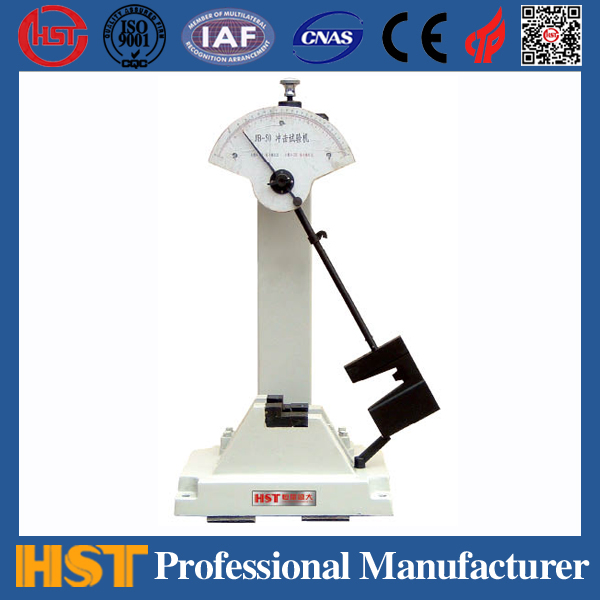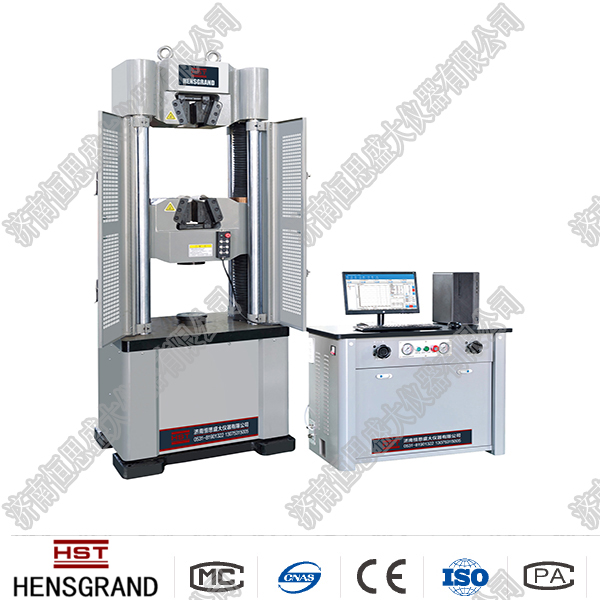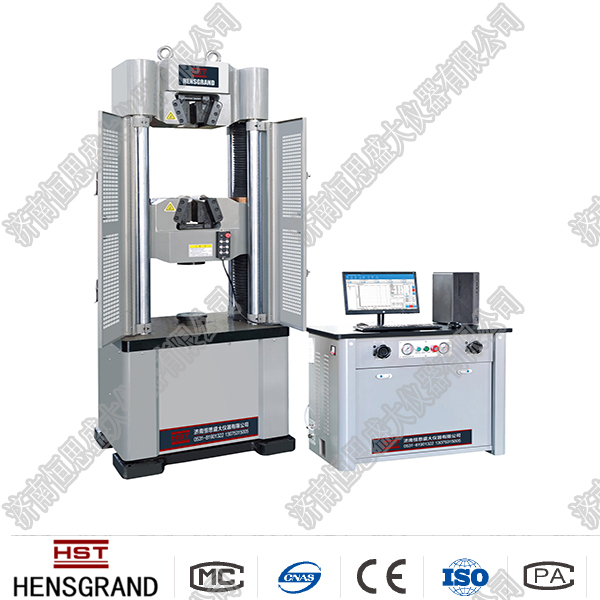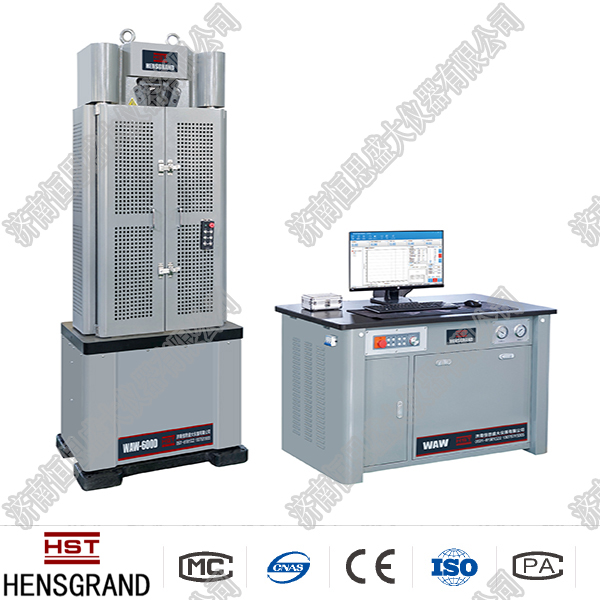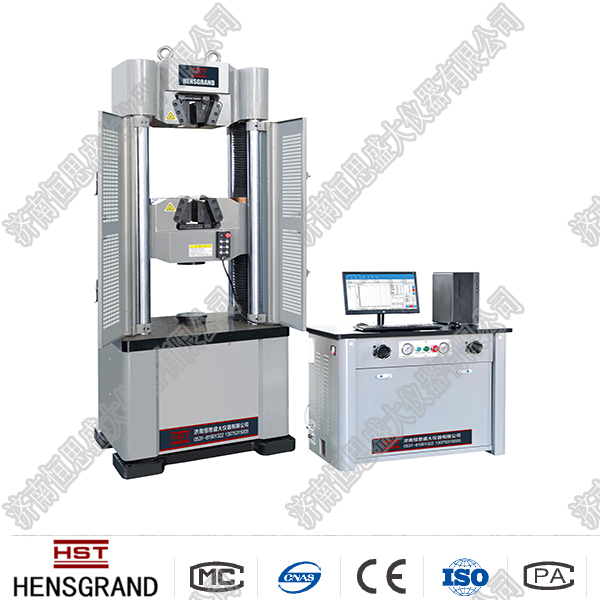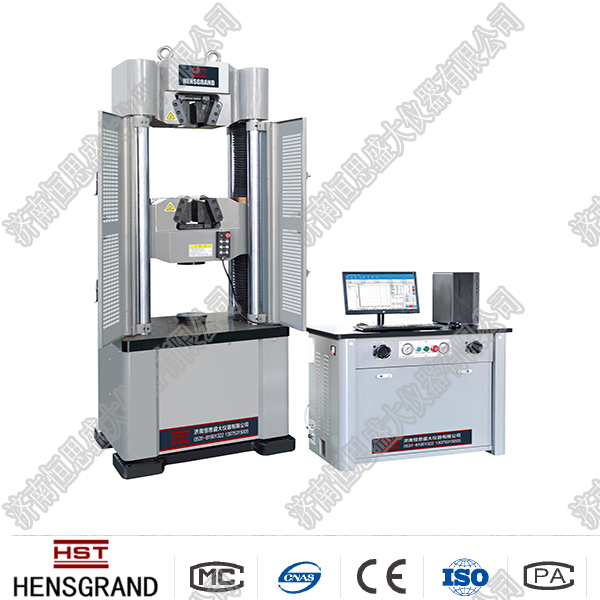Company News
Classification and performance characteristics of electronic universal testing machines
Release time:2018-11-23 source:Jinan Hengsi Shanda Instrument Co., Ltd. Browse:
1. Types of common universal material testing machines
1. Hydraulic series: manual hydraulic universal material testing machine; electro-hydraulic servo hydraulic universal material testing machine
2. Electronic universal series: conventional electronic universal material testing machine; high-performance electronic universal material testing machine
They have different performances, advantages and disadvantages coexist, and each has its own user groups.
2. Performance characteristics
1) Hydraulic Series
2) Manual hydraulic universal testing machine
The manual hydraulic universal material test machine mainly uses a simple high-pressure oil source as the power source, a manual adjustment valve as the control element, and manually load it. Therefore, it belongs to the open-loop control system. Due to the limitations of the oil source flow rate and main engine structure, its cylinder piston stroke is smaller, the common one is generally around 300mm, and its test speed is generally smaller. Affected by price factors, pressure sensors generally use pressure sensors (large tonnages basically use pressure sensors). Therefore, the accuracy is lower and the range is smaller. Generally, the accuracy is level 1 or level 2, and the range is generally 4%-100% F.S. Affected by the friction of the oil cylinder, it is generally difficult to achieve a very small tonnage, and the smallest in China is 5T. However, due to its unique low price and large tonnage characteristics, it is still widely used in finished product inspection and single material index testing.
2) Electro-hydraulic servo universal testing machine
It mainly uses precision high-pressure oil source as power source, and uses servo valves or proportional valves as control elements for closed-loop automatic control, so the control performance is high, and three control modes can be realized: load, strain, and displacement. Like the manual hydraulic universal material testing machine, due to the limitation of the oil source flow, its test speed is relatively low. Due to the use of closed-loop automatic control, system stiffness has become the key to the normal operation of the entire system. As we all know, the stiffness of liquid is relatively low. In order to minimize the impact of liquid on the rigidity of the whole machine, the stroke of the electro-hydraulic servo tester is not large. Also affected by the rigidity of the whole machine, the tonnage of the electro-hydraulic servo tester cannot be very small, basically more than one ton. However, because it has multiple control modes, it has the characteristics of flexible use and high performance.
2. Electronic universal series
1) Conventional electronic universal material testing machine
Conventional electronic universal mainly uses servo motors as power sources, and lead screws and wire masters as execution components to realize the speed control of the moving beam of the test machine. Its test speed range can be adjusted. Taking RGM-200 as an example, its test speed can reach 0.001mm/min-1000mm/min, and the speed ratio can reach 1 million times. The test stroke can be determined according to needs, reaching several meters. This cannot be achieved by hydraulic testing machines anyway. With the development of electronic technology and the improvement of servo motor performance, the motors used by electronic universal have gone from the early DC servo motors to the current more AC servo motors. From the early power components used to select thyristors for phase shift trigger control to the use of a variety of power modules to realize pulse width modulation control, the performance of electronic universal has made a qualitative leap. In people's minds, the failure rate of electronic universal is high, and the poor performance is no longer there. Since conventional electronic universal use speed control, the system stiffness is not high, which creates favorable conditions for the realization of small tonnage test machines. Judging from the current international and domestic situation, test machines below one ton are basically conventional electronic universal testing machines. It has a wide range of uses and cost-effectiveness.
2) High-performance electronic universal testing machine
Like conventional electronic universal testing machines, high-performance electronic universal testing machines also use servo motors as power sources, and lead screws and wire masters as execution components. The difference between them and conventional electronic universal testing machines is that their control method can be load control, strain control or displacement control. In addition to the characteristics of conventional electronic universal versatile speed and large stroke, it also has all the advantages of electro-hydraulic servo testing machines, so it is a universal material testing machine with current performance. At present, the best of this type of test machine are basically used as core control components. Because it has three control modes: load, strain, and displacement, the stability of the whole machine is directly related to the stiffness of the system, and the stiffness of the sample directly affects the stiffness of the system. Therefore, when there are many types of test samples, the stiffness of the whole machine will change greatly, so it is difficult to ensure that all tests can be carried out normally. In order to meet the normal operation of all tests, the parameters of the control system (P, I, D parameters) need to be adjusted at any time. This is difficult for non-automatic control professionals, so that the advantages of this type of test machine cannot be fully utilized.
Recommended productsPRODUCTS


















